Should I Filter My Water on the PCT?
With the thru-hiking season around the corner and rain and snow still very much part of the PCT landscape, the repeated question around water filtering comes up. When you are out in the middle of nowhere, in the backcountry, getting water from a stream, do you really need to filter that water?
To jump to the conclusion: yes, you need to filter water on the PCT.
And now a bit more:
Why filtering water in the backcountry?
Despite the very tempting look of a refreshing stream on a warm summer day, the primary source of what gets us sick outdoors are the things we can't see or smell. Water sources might look great but you often don't see the water all the way to the source.
Maybe there is a dead animal a few miles up stream? A fellow camper wasn't great in their LNT practices and went number 2 too close to the water? Even just a day hiker enjoying dipping their feet in the water a bit up stream. All these situations can easily lead to potential water contamination and the inevitable mess in your bowels.
The main reasons to filter water are around human interaction; the increased number of hikers along the PCT means that water sources can get contaminated easily.
What happens when you drink contaminated water?
The CDC lists a long list of potential contaminates in water but the main two that tend to be found in the backcountry are Giardia and E. Coli. Giardia is a parasite and E. Coli is a bacteria and when digested, both can cause gastrointestinal problems.
Digesting Giardia or E. Coli doesn't have to mean getting sick; a person can easily be asymptomatic, but if symptoms show up, especially in the backcountry, that can be nasty. Here is what to expect:
- Diarrhea
- Gas or flatulence
- Greasy stool that can float
- Stomach or abdominal cramps
- Upset stomach or nausea
- Dehydration
The real danger for hikers in the last one: dehydration. When having severe diarrhea and a messed up stomach, it is very hard to stay hydrated, let a lone the terrible feeling of needing to urgently dig a cat hole every few minutes to get another liquid mess out from the back end.
But what about the weight?
Despite the temptation to get to a sub 7 lbs base weight, water filtering gear is worth its weight in gold. Ditching water treatment is a very bad idea for anyone hiking over time. There are alternatives like tablets, but they can be tricky.
Chemical tablets are indeed lighter than filters on the trail, but getting the right reaction time and the perfect ratio is a matter of practice, especially for new hikers. Many times you will be getting to a water source, especially in SoCal, and needing to not just get water for the next leg, but camel up after running out of water a while back. Chemical treating means waiting, and if you are impatient or very thirsty, you can easily get a gastrointestinal illness.
Some resources to get you sorted
If you are still stuck in the pump era (which you should ditch by now), have a quick read on what hikers used on the PCT last year for water treating. This is a great post by Halfmile Anywhere.
After you read that, come back here and get a Vecto to match your filter.
Second, make sure you are on top of the PCT Water Report, a great site that is constantly updated thanks to other hikers, and will give the status of water resources.
If you are still not sure how to carry your water, I wrote a post a while back about it, so give it a read. The consensus is that you should have at least 4 liters water capacity for Southern California, and then reducing to 1-3 liters depending on your hiking style.

Conclusion and a story
To sum it all up: do yourself a favor and filter your water on the PCT. The small weight penalty of a reliable source of drinking water is worth it to make sure you stay healthy on the trail and actually make it thru your hike.
Getting sick on the trail will probably lead to leaving the trail and a good few days (if not weeks) of not hiking, saying good bye to your trail family or even missing Sierra hiking windows.
Last, a story about my personal experience with a nasty case of Giardia: A long time ago, I hiked along the Andes, young and carefree. I was hiking in Bolivia, getting to a side trail leading from the Andes down to the Youngas. My hiking partner and I left the high mountains for the lush forest, having the most amazing time, until 3-4 days in, when I got terrible cramps and stomach pain. It probably wouldn't have been so bad if we weren't in the middle of a trail on a gorge, hundreds of feet above the river and only more gorge in each direction for a couple of days.
We made a decision to share my cramped 2 person tent for a few days on a tiny ledge on the trail, with me running to throw up or having the runny bowels off the side of the cliff. Luckily I had antibiotics for such an occasion, but after 3 days of being a mop, not eating and being completely drained, putting my (very heavy) backpack back on to hike out of the gorge was very hard.
The moral of the story is: filter your water. Don't be like me.













Leave a comment